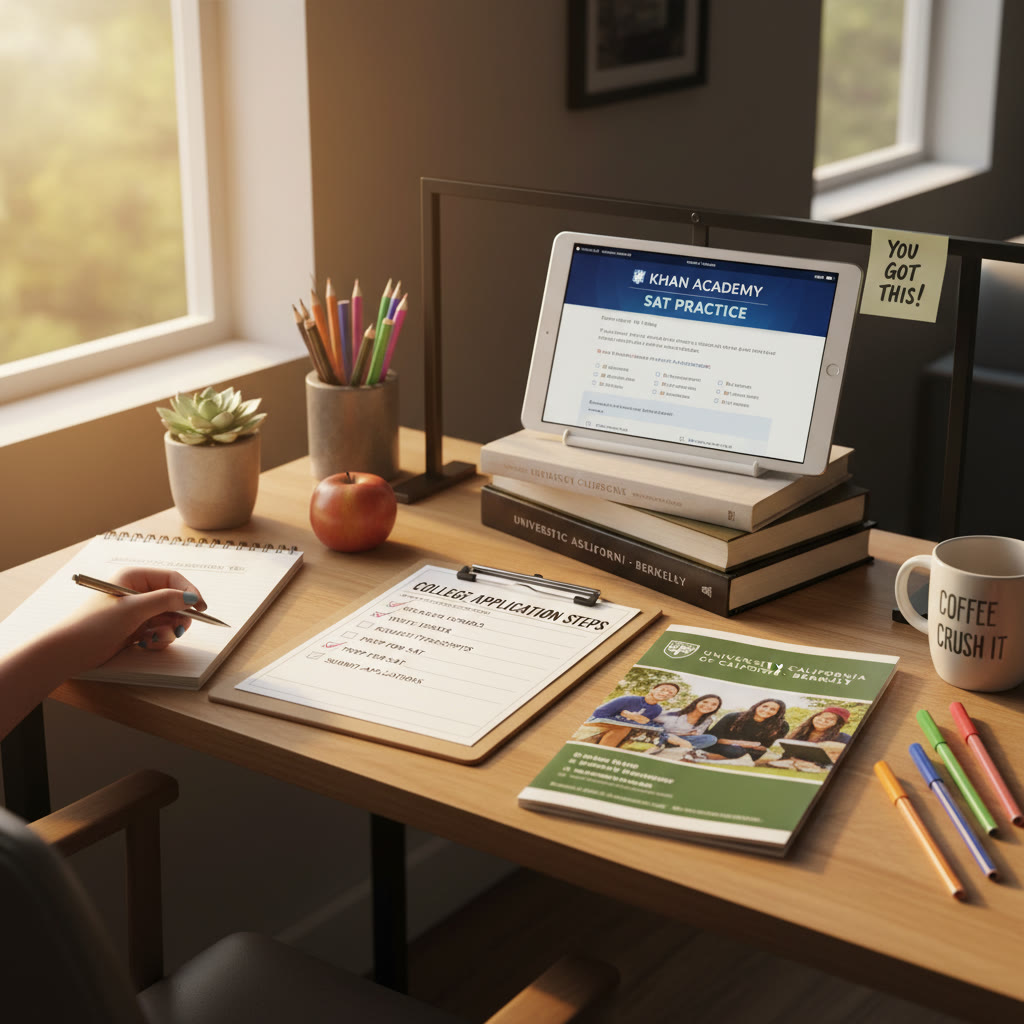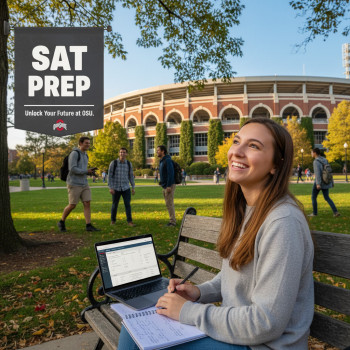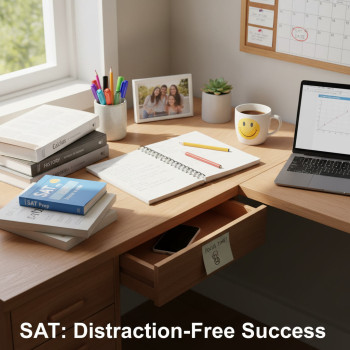Introduction: Why the SAT Still Matters — Especially for Public Ivies
Conversations about the SAT can feel charged. In recent years many colleges experimented with test-optional policies, and headlines sometimes imply the SAT is fading into the background. The truth is more nuanced. For many Public Ivy universities — those public institutions with Ivy-caliber academics, resources, and selectivity — the SAT (now in its digital form) continues to be a meaningful part of the admissions conversation.
If you’re a student dreaming of Berkeley, Michigan, Virginia, or another Public Ivy-style school — or a parent helping one — this guide is for you. We’ll unpack what these universities typically look for from SAT scores, how test policies vary, how to set realistic target scores, and practical steps (including how Sparkl’s personalized tutoring can fit into a winning plan) to strengthen your application.

What “Public Ivy” Means — And Why It Changes How You Use SAT Scores
Public Ivies are public universities that offer an academic experience comparable to the Ivy League: strong research, rigorous majors, and competitive admissions. They’re also big and diverse — both in student body and in how they evaluate applicants.
That combination matters. Large applicant pools mean these schools often rely on standardized measures (like SAT scores) to help contextualize academic readiness across different high schools. At the same time, many Public Ivies have layered, holistic reviews — so the SAT is one important piece, not the whole puzzle.
Typical SAT Roles at Public Ivies
- Admissions filter or context: SAT provides a quick academic baseline among tens of thousands of applicants.
- Merit and scholarship decisions: Many institutions use scores for scholarship eligibility or to compare applicants for merit-based aid.
- Placement and advising: SAT scores can sometimes be referenced for placement into certain courses or honors programs.
Understanding Test Policies: Required, Optional, or Recommended?
One of the first things to check for any school is its current test policy. Policies have been dynamic — some campuses are test-optional, some reinstated testing requirements, and others use scores selectively. For students, the key first step is to check the up-to-date policy on each college’s admissions page before you decide whether to submit scores.
How to Interpret a College’s Policy
- Test-Required: All applicants must submit SAT (or ACT) scores. If you plan to apply, you should aim to meet or exceed the middle 50% range for admitted students.
- Test-Optional: You choose whether to submit scores. Submit them if they strengthen your application relative to other parts (GPA, coursework, extracurriculars).
- Test-Blind (rare for Public Ivies): Scores are not considered at all. In this case, your profile depends entirely on grades, course rigor, essays, and activities.
Target Scores: How to Set Realistic Goals
One trap is treating the SAT as a single magic number. Instead, think ranges. Most Public Ivies report a 25th–75th percentile score for admitted students — that’s your most useful benchmark. If your practice and official scores fall comfortably inside (or above) the middle 50%, you’re competitive from a test-score perspective.
Example Score Ranges (Illustrative)
Different public Ivies have different profiles. Below is a simplified example table showing how you might translate ranges into target categories — treat these as advisory categories rather than strict cutoffs.
| University (Example) | Typical Middle 50% SAT Range | Recommended Target | Strategic Note |
|---|---|---|---|
| University A (e.g., high-selectivity Public Ivy) | 1350–1530 | 1500+ | Scores above 75th increase admissions and scholarship chances. |
| University B (selective) | 1250–1450 | 1400+ | Strong GPA + ECs can offset slightly lower SATs. |
| University C (competitive but broader admit pool) | 1150–1350 | 1300+ | Consider majors — STEM may favor higher math scores. |
Why set targets above the midpoint? Admissions are competitive, and many applicants have similar high GPAs. A higher SAT can demonstrate academic potential in a way that stands out when other parts of the application are comparable.
Digital SAT Specifics: What’s Different and Why It Helps
The SAT is now delivered digitally. That changes the logistics and strategy more than the fundamental skills tested. Digital administration offers adaptive sections, a shorter test window, and faster score reporting. Practically, it means practice should involve full, timed digital sections, not just paper tests.
Practical Prep Implications
- Train on the digital interface: navigation, on-screen tools, and the timing feel different.
- Focus on pacing across shorter, adaptive modules rather than long paper sections.
- Use authentic, official digital practice materials where possible to mirror test conditions.
Beyond the Score: Holistic Factors Public Ivies Value
SAT scores matter, but Public Ivies evaluate many elements of a student’s profile. High test scores won’t make up for a weak transcript, and a slightly lower score can be balanced by exceptional coursework, leadership, or compelling personal context.
Key Holistic Components
- Transcript rigor: AP, IB, honors courses, and the story your grades tell over time.
- Essays and personal statements: unique voice, clear goals, and authenticity.
- Extracurriculars: depth often matters more than breadth — sustained leadership or achievement in a meaningful area.
- Recommendations and demonstrated interest: when applicable, strong teacher recommendations and thoughtful campus engagement can help.
Strategic Approaches to Applying with the SAT
Here are practical strategies students can use depending on where their scores fall and what the college’s policy is.
If Your Scores Are Above the School’s 75th Percentile
- Submit scores to strengthen scholarship and merit considerations.
- Use scores to offset less well-known high school backgrounds or nontraditional curricula.
- Pair the score with a concise academic narrative in essays (e.g., research interest, advanced coursework).
If Your Scores Are in the Middle 50%
- Submit scores as part of a balanced application; invest in polishing essays and recommendations.
- If considering scholarships, check whether the institution uses fixed score cutoffs.
- Consider retesting one last time if practice suggests measurable improvement is likely.
If Your Scores Are Below the 25th Percentile
- If test-optional: weigh whether your other application strengths make you competitive without scores. If yes, consider omitting them.
- If test-required or you want to try to boost chances: create a focused, data-driven study plan and consider targeted tutoring to raise scores in specific sections.
- Highlight unique strengths — research projects, artistic portfolios, leadership, or significant contextual factors — to complement your application.
How to Build a Practical SAT Study Plan (That Actually Works)
Preparation is both art and science. The art is knowing your story and energy cycles; the science is targeted practice that addresses your specific weaknesses.
Step-by-Step Plan
- Baseline: Take a full digital practice test under timed conditions to get a true starting score.
- Analyze: Break the score down by question type and content area (e.g., algebra, data interpretation, evidence-based reading).
- Target: Choose one or two high-impact skills to focus on each week (for example, algebra fluency or passage-based evidence).
- Practice: Use authentic digital practice questions and schedule regular, timed mini-tests to build stamina.
- Review: Mistake logs are gold. For every incorrect question, note why and how you’ll avoid that mistake next time.
- Simulation: In the last month before test day, take 2–3 full, timed digital tests; practice the logistics (device setup, breaks, on-screen tools).
Why Personalized Tutoring Helps
Generic prep can get you so far. But when score improvements matter — especially for Public Ivies — personalized tutoring makes a measurable difference. A good tutor identifies patterns in your mistakes, adjusts pacing strategies, and creates tailored practice that focuses on the 20% of skills that drive 80% of score gains.
Sparkl’s personalized tutoring, for instance, offers 1-on-1 guidance, tailored study plans, expert tutors, and AI-driven insights to track progress — a helpful fit for students aiming to move from “good” to “competitive” for top public universities.
Timing and Logistics: When to Test and How Often
Start early, but test strategically. Most students take the SAT at least once in junior year and again early senior year if they want to improve scores. The digital test’s score release timeline is faster than before, so plan around deadlines for early action, early decision, and scholarship applications.
Practical Timeline Example
- Spring Junior Year: Baseline practice test and start targeted prep.
- Summer Before Senior Year: Intensive prep block (2–6 weeks), simulate full digital tests, address weak spots.
- Early Fall Senior Year: Official test for early applications; if needed, a retake before regular decision deadlines.
How Scores Influence Scholarships and Programs
Public Ivies often have institutional scholarships tied to academic merit, and SAT scores can be a primary metric. Even a modest improvement can shift scholarship tiers, so investing in focused prep can have a strong financial return.
Checklist for Maximizing Scholarship Potential
- Confirm whether the university uses SATs for scholarship qualification.
- Ask whether the highest single test score or superscoring is used.
- Consider test dates and deadlines for scholarship rounds (some scholarships consider early applicants separately).
- Use personalized tutoring to push the score into a qualifying bracket.
Realistic Expectations: What Improvement Looks Like
Score gains depend on starting point, time invested, and the quality of practice. Typical, realistic improvements with focused study and quality tutoring range from 40–200 points, depending on where you begin. Gains are often largest for students who have strong content knowledge but need strategy and pacing improvements.
Illustrative Examples
- A student stuck at 1180 who focuses on algebra fluency and targeted reading strategies might reach 1300–1360 after 3–4 months.
- A student already at 1430 who refines pacing and test strategy may gain 30–80 points with polished practice and targeted tutoring.
Putting It All Together: A Sample Personalized Roadmap
Here’s a compact roadmap you can adapt to your timeline and goals:
- Week 1: Full digital baseline test. Set a realistic target based on your desired Public Ivy and its middle 50%.
- Weeks 2–6: Focus on two weak areas. Use timed practice modules and weekly progress checks. Consider starting Sparkl sessions to get 1-on-1 guidance and an individualized plan.
- Month 2–3: Increase full test simulations. Log and correct mistakes. If working with Sparkl, use AI-driven insights to refine practice blocks and address pacing.
- Final month: Peak with 2–3 full digital tests, refine test-day logistics, and practice calm, focused routines.
Test Day and Beyond: Tips for a Confident Performance
On test day, logistics and mindset matter as much as content. Sleep well, eat balanced food, and practice the digital interface beforehand so nothing feels unfamiliar. Bring required identification and arrive with a calm, confident routine you’ve rehearsed during practice tests.
Mindset Checklist
- Control what you can: prep, practice, and rest.
- Don’t let a bad section define the whole test — adapt and move forward.
- Remember: the SAT is one slice of your application. Use scores strategically with your essays, recommendations, and extracurriculars.
Where Parents Fit In: Support Without Pressure
Parents play a huge role. Helpful support is practical and emotional — creating study-friendly space, helping manage schedules, and offering steady encouragement. Avoid turning prep into a pressure cooker; emphasize effort, growth, and balanced well-being.
Ways to Help
- Help schedule practice tests and quiet study blocks.
- Celebrate small milestones (consistent practice, improved section scores) rather than only final numbers.
- Consider investing in targeted support like 1-on-1 tutoring if it removes stress and improves outcomes.
Final Thoughts: Make the SAT Work for Your Story
Public Ivy universities are competitive, but they also value students who demonstrate academic readiness, intellectual curiosity, and authentic contributions. The SAT is a practical tool in that evaluation — not a destiny-defining stamp. Use the test to strengthen your narrative: aim for a realistic target, practice smart, and surround yourself with support that’s tailored to your needs.
If you’re seeking structured, individualized help, consider options like Sparkl’s personalized tutoring. With 1-on-1 guidance, tailored study plans, expert tutors, and AI-driven insights, Sparkl can help translate practice into measurable improvement — especially when an extra 50–150 points could change admission and scholarship possibilities.

Quick Checklist: Next Steps for Students and Parents
- Confirm each target Public Ivy’s current test policy.
- Take a full digital baseline test and set a realistic target score.
- Create a focused study plan with weekly goals and timed practice.
- Consider personalized tutoring for targeted, efficient improvement.
- Time your test dates around application and scholarship deadlines.
- Build the rest of your application — essays, recommendations, and activities — to tell your full story.
Closing
Preparing for the Digital SAT with Public Ivy ambitions is a marathon of strategy, steady practice, and wise choices. Scores matter, but so does the story you present. Aim to improve your score intelligently, use the test to amplify your strengths, and remember there are many routes to a great outcome. With clear goals, a purposeful plan, and the right support, your application can shine.
Good luck — and if you want help building a personalized plan, a thoughtful tutor or tailored program can make the difference between a hopeful application and a confident one.


















No Comments
Leave a comment Cancel